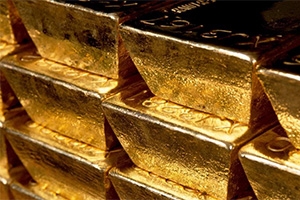
Content supplied by the World Gold Council*
Following a remarkable performance year-todate, the gold price fell by over 3% on 4 October, taking it below US$1,300/oz for the first time since the Brexit announcement in June 2016.
The move seems to have been driven by speculation of a scaling back in the ECBs asset purchase programme, combined with rising expectations of a US rate hike in December.
The move was exacerbated by technical levels, tactical positioning in derivatives markets and a national holiday in China.
Looking forward, we believe the price dip will offer a good buying opportunity for consumers and long-term investors.
In addition, even though central banks may start to normalise monetary policies, such a prolonged period of extraordinary measures has led to a structural shift in asset allocation that will linger much longer. In this new normal of lower returns and higher uncertainty, gold has an important role to play in the portfolios of investors large and small.
Gold falls below key support level
For the past 3 months, the gold price traded in a range of $1,310/oz-$1,370/oz. In the early hours of October 4, the price started consolidating near the lower end of the range. This was driven by slightly better-than-expected economic news in the US and recent bullish commentary by some of the Fed’s FOMC members. The media also reported that the ECB may look to scale back its €10 billion monthly bond purchase programme.
Once the gold price pushed below US$1,310/oz an ounce, representing gold’s 100-day moving average, technical selling increased sharply (Chart 1), exacerbating the fall and triggering stop-losses and further tactical selling. Meanwhile, Chinese investors, who have historically bought on dips, were celebrating Golden Week national holiday, leaving domestic markets closed.

Higher rates may not result in a lower gold price
A shift in monetary policy need not signal lower gold prices. Although negative nominal rates are unprecedented, there are many historical precedents for negative real rates which give rise to the following stylized facts:
• When real rates are negative, gold returns tend to be twice as high as the long-term average
• Even if real rates are positive and as long as they are not significantly high (4% in our analysis), average gold returns remain positive
• Falling rates are generally linked to higher gold prices; yet rising rates aren’t always linked to lower prices. Price dip to lead to physical buying
Despite the decline, gold remains one of the best performing assets this year, rising by 20% in dollar terms (Chart 2)

We believe that consumers and investors may see the price decline as a good buying opportunity, as many have been waiting for a price pull-back before entering the market. Q3 2015 served as a good example, when a 7% decline in the gold price triggered a sharp increase in demand for jewellery and bars and coins.
Some data already point to an uptick in consumer interest. The top five countries where consumers were searching for gold following the price drop were in the Middle East, with the UAE being number one. Anecdotal evidence suggests that consumers had been holding off purchases in previous months, so this may well trigger an increase in demand. The price correction also comes at a good time for Indian consumers. With a good monsoon, the upcoming wedding season and Diwali and Dhanteras festivals, demand could pick up after subdued activity year-to-date.
Volumes in the physically gold-backed ETF picked up in the secondary market as the price fell, and they haven’t resulted in large redemptions so far. We believe this is an indication that there is still good appetite for gold amongst the investment community.
Central banks, a major driver of gold demand, continue to be strong buyers of the metal to diversify their reserve asset holdings considering the shrinking universe of nonnegative yielding assets. The Russian central bank recently said that it had no specific target for its gold holdings and continues to buy regularly every month. Meanwhile, a recent survey of 19 central bank reserve managers, conducted by the World Gold Council shows that nearly 90% of them will either increase or maintain their current gold reserve levels, indicating a strong floor of support for gold demand (Chart 3).

Gold remains a key portfolio component in this environment
Market fluctuations will naturally occur from time to time, but the fundamental environment for gold remains strongly supportive. The broader market environment of ongoing low and negative interest rates, coupled with continuing political, economic and policy uncertainty remains unchanged, and are generally positive for gold.
This content was supplied by the London-based World Gold Council and the original document can be found here.
![]() Our free weekly precious metails email brings you weekly news of interest to precious metals investors, plus a comprehensive list of gold and silver buy and sell prices.
Our free weekly precious metails email brings you weekly news of interest to precious metals investors, plus a comprehensive list of gold and silver buy and sell prices.
To subscribe to our weekly precious metails email, enter your email address here. It's free.
Comparative pricing
You can find our independent comparative pricing for bullion, coins, and used 'scrap' in both US dollars and New Zealand dollars which are updated on a daily basis here »

We welcome your comments below. If you are not already registered, please register to comment.
Remember we welcome robust, respectful and insightful debate. We don't welcome abusive or defamatory comments and will de-register those repeatedly making such comments. Our current comment policy is here.